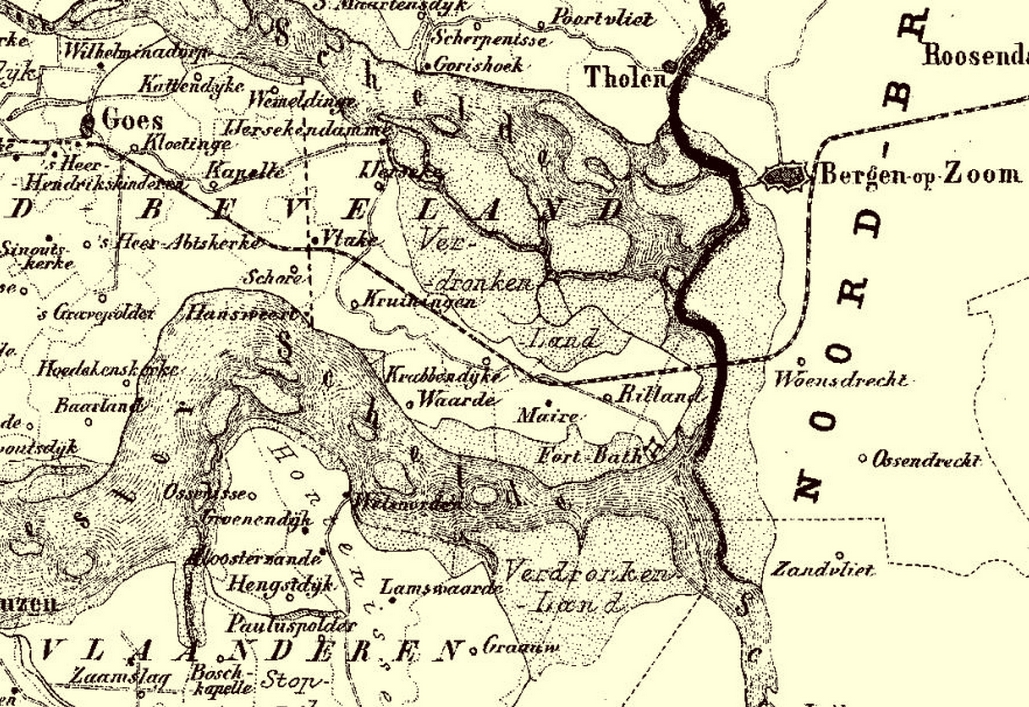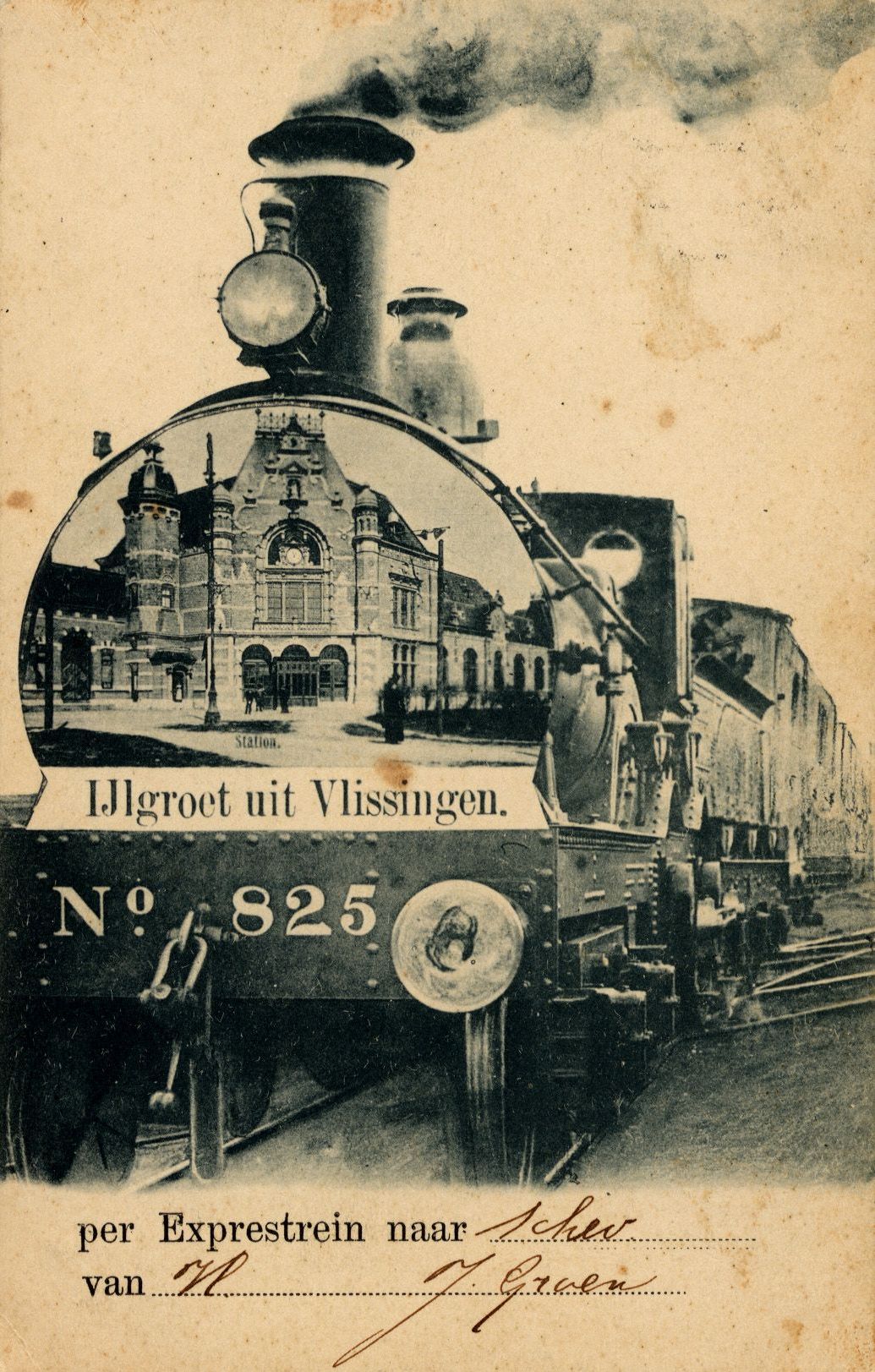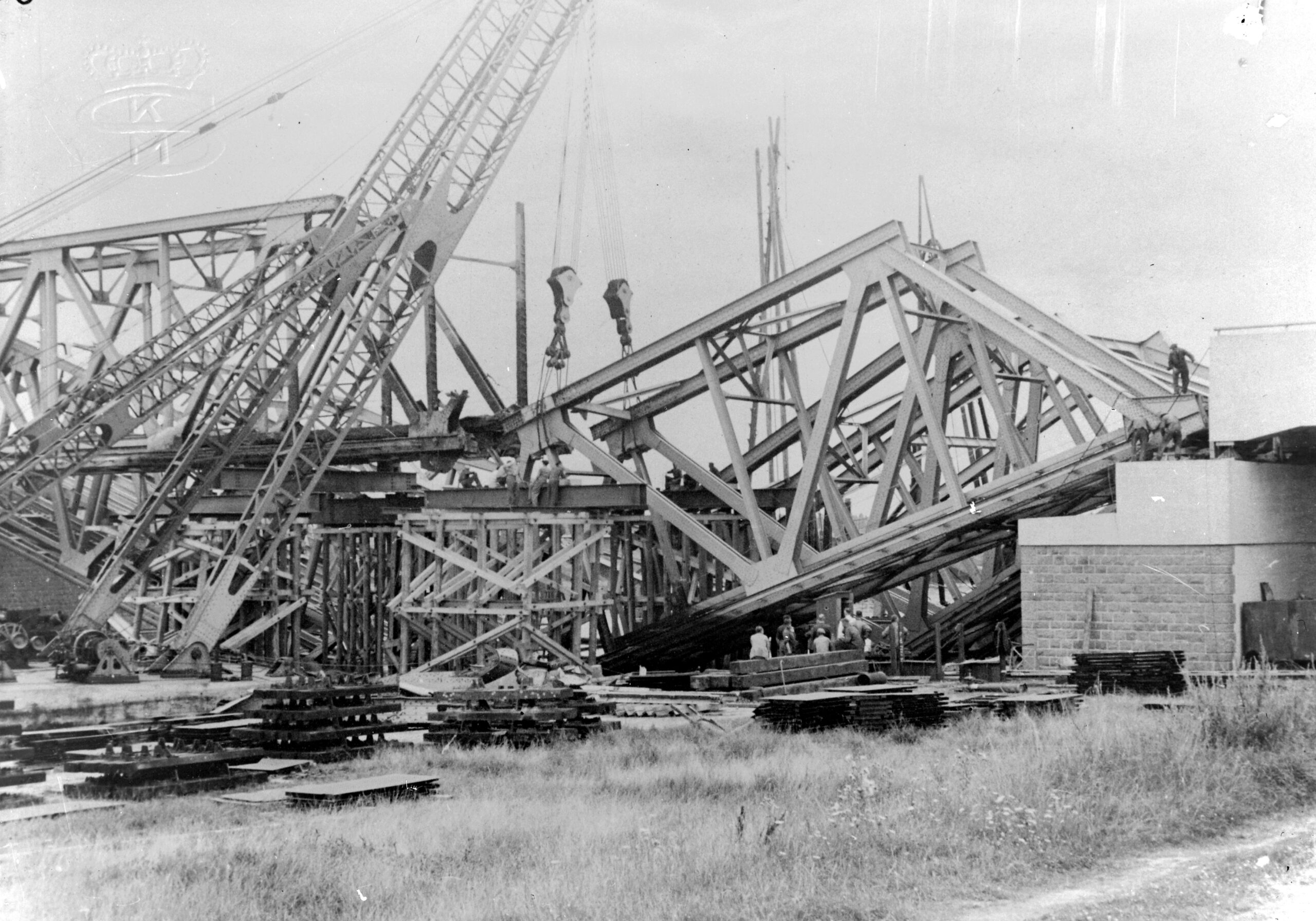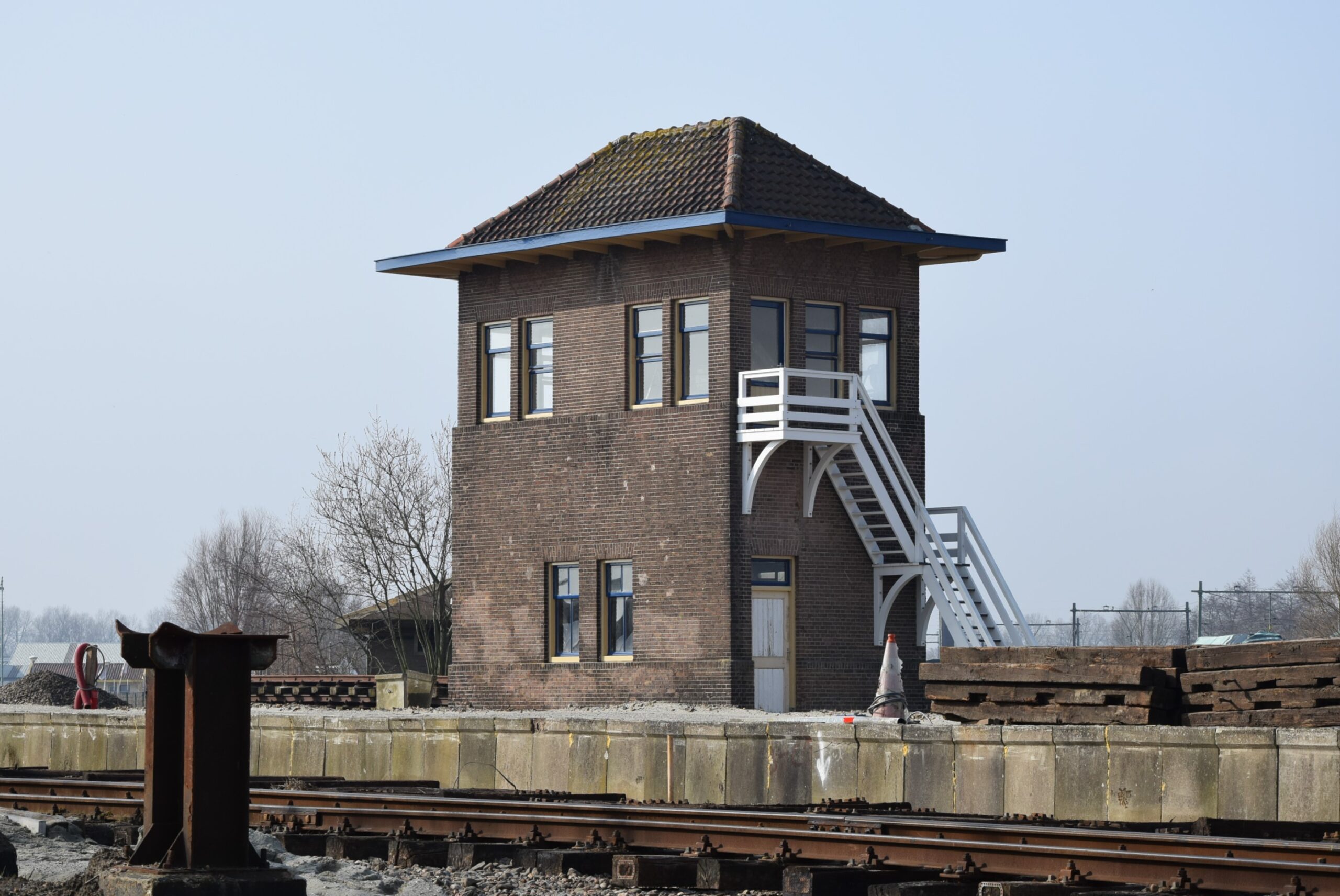Railways
by Jan KuipersWith the completion of the route to Vlissingen harbour, the Zeeland railway became a reality on 1 September 1873. The first initiative dated from 1846, when contractor Dirk Dronkers was granted a concession for the construction of a Vlissingen-Middelburg-Venlo-Maastricht railway line. He had already applied for a concession in 1839 for damming up the Sloe and the Kreekrak, and for a canal through Walcheren. This was also the year in which the first ever Dutch train actually ran from Amsterdam to Haarlem.
Despite the festivities in 1846, it was not until 1868 that the first Zeeland stretch of railway to Goes was completed: by then, the railways were state-run. The Kreekrak was dammed up in 1867. A year earlier, after fourteen years of digging the Kanaal door Zuid-Beveland was opened to compensate maritime shipping. In Middelburg, a celebratory verse was already circulating in 1867, which read: ‘Thans is ieder opgetogen, / Nu het spoedig waarheid wordt / Dat het weldoend stoomvermogen / Ook door Walchrens beemden snort’. (Right now everyone is delighted, / Now that it will soon become true / That the good and mighty steam power / Will roar through Walchren’s meadows too’.)

Railway line to Goes over the new Kreekrakdam (Gemeente Atlas, by J. Kuyper, 1865-1870).
The damming up of the Sloe followed in 1871. On 1 March 1872, the railway line was opened as far as Middelburg and on 1 September 1873, it reached Vlissingen-Stad. One week later, King Willem III opened the Kanaal door Walcheren, which was needed for the construction of the Sloe Dam.
Stations
End of the line Vlissingen was to become an important hub, the expectations were high. The annual report of the Zeeuwsche Landbouwmaatschappij (Zeeland Agricultural Association) of 1869, for instance, predicted its ‘astonishing influence’ and its ‘unprecedented prosperity’. Walcheren and Zuid-Beveland could become ‘the market garden’ of London, ‘as soon as a steamboat service is opened between that town and Middelburg or Vlissingen’.
The connection to England was established in 1875 by the Stoomvaart Maatschappij Zeeland (SMZ). Dedicated boat or mail trains arrived from Germany in Vlissingen, which grew to become the most important European port for mail services to England. This was also the reason for the construction of Vlissingen-Haven station (with even a lavishly decorated royal waiting room). After all, it was not possible to quickly transfer postal items onto a boat from Vlissingen-Stad.

‘IJlgroet uit Vlissingen’, (IJl greetings from Vlissingen), with on the locomotive a picture of the station from 1894 (Zeeuws Archief).
The other stations in Zeeland were most simple 5th class stations, such as Krabbendijke and Kapelle-Biezelinge. The station that was renewed in 1982 at Goes was a bit nicer: 4th class. The stations of Middelburg (1872, 3rd class), a neo-classical work in curved arch style, and Vlissingen are now national monuments. Vlissingen-Haven was given its definitive form in 1894, whereupon Vlissingen-Stad became obsolete. Both buildings were destroyed in the Second World War. The present station at the site of Vlissingen-Haven dates back to 1950.
Other stations in Zeeland also fell by the wayside: Vlake, ‘s-Heer Arendskerke (Eindewege) and Lewedorp (Noord-Kraaijert). The station buildings of the still existing Oost-Souburg and Rilland-Bath stations have been demolished.
Local railways and tramlines
In 1871, a railway line Mechelen-Terneuzen was set up on a Belgian initiative, operated by the Société Anonyme du Chemin de Fer de Gand à Terneuzen and the Société Anonyme du Chemin de Fer International de Malines à Terneuzen. The passenger service on the line to Ghent had already been discontinued in 1939, Terneuzen-Hulst-Sint Niklaas followed in 1951/52. The Terneuzen-Ghent line with a new Sluiskil-Dow Chemical connection in the Nieuw-Neuzen polder remained in use for freight transport.
Zeeuws-Vlaanderen also had a fairly dense network of railways and tramways. The first tramline (Breskens-Maldeghem with a side branch in Sluis) opened here in 1887. The first steam tram line in Zeeland ran between Middelburg and Vlissingen (1881). Tram lines also operated elsewhere in the province, such as the line between Steenbergen-Nieuw-Vossemeer-Anna Jacobapolder (1900) and Zijpe-Brouwershaven/Burgh (1900-1915). Eventually, all the companies switched to bus services.
A part of the Goes-Hoedekenskerke tramline was later used by the Oude Sloelijn, a freight railway line that was opened in 1966 to serve the Vlissingen-Oost port area. A New Sloelijn came into service in 2008. The current scenic Goes-Borsele steam train is keeping another part of the old route (to Hoedekenskerke) alive.
Accidents, wartime damage
The Zeeland line was not immune to major accidents. In 1899, a train ran through a bumper block in Vlissingen due to a faulty brake. There were three casualties. A major collision between a passenger train and a freight train took place in dense fog near Eindewege on 27 October 1976. Seven people died, seven were seriously injured and there was extensive damage.
The second track on the Zeeland line, which was laid later, was demolished and removed by the Germans in the Second World War. The war also inflicted other damage on the line, not only in Vlissingen. For example, the relatively new railway bridge at Vlake was destroyed during acts of war in the years 1940 and 1944.

The destroyed railway bridge at Vlake being raised, August 1940 (Zeeland Archives, archive of Kon. Mij. De Schelde, coll. 7513, no. 5332).
Furthermore, heavy damage was caused in Zuid-Beveland by the floods of 1906 and 1953. In 1953, the low-lying section of line near Kruiningen, which came under water at high tide, was known popularly as the ‘bathtub railway’.
Modernisation
Modernisation soon followed after the Second World War. In 1949, diesel-electric trains were introduced, which started with the summer service timetable of 1950 with the operation of a full hourly service. The line was electrified in 1956/57.

Former Middelburg signal box, since 2000 in the SGB yard in Goes (photo H.M.D. Dekker).
Changes in timetables and connections continued to be made. In 1994, for instance, the last direct train ran between Vlissingen and Zwolle. A plan by Dutch Railways in 2006 to close the Arnemuiden, Kapelle-Biezelinge and Krabbendijke stations was called off after protests from Zeeland and the House of Representatives.
